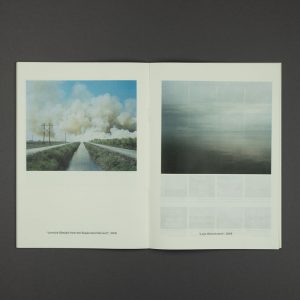PUBLICATIONS
Foreverglades & Miracle Village
Foreverglades & Miracle Village by Sofia Valiente
For decades after Western Expansion, South Florida was still a wilderness.
Only once pioneers dredged canals and redirected the flow of Lake
Okeechobee did this area become habitable. These once considered “useless”
territories of marshes and swamps ultimately gave way to development and
industry.
On the southern tip of the lake lies Belle Glade, a small agricultural town that
one might pass on a road trip today, just a couple of stoplights and it’s gone. It
hides a rich history that leads to how we arrived here in Florida.
In 2015, I moved into a former rooming house apartment in Belle Glade
and soon after came across books by Lawrence E. Will and Zora Neale
Hurston. Will painted a picture of the pioneers who developed the area
through persistence and foresight, and for me, Hurston gave a voice to the
workers who built the Glades with their bare hands. Their writing became my
framework for exploring the past and looking at its contemporary parallels. In
this time capsule, history is present — roots run deep and the pioneer spirit
can still be felt.
As a photographer and storyteller, I have frequently sought to understand
how deep the “iceberg” reaches. For my first published work, “Miracle
Village”, which documents the lives of sex offenders living together in a
community, my pursuit focused on the events leading up to each person’s
convictions and the psychology of a person who lives as a modern-day leper.
With my latest project, “Foreverglades”, I looked to history as a framework
for understanding how American capitalism has shaped and continues to
reshape, our communities. I studied how this pioneer spirit was built on
tenacity and doggedness. I see humanity as a collective whose individual
people play differing roles and whose stories are interwoven in a deep
tapestry. For me, the present is a question that history answers.
My intention with constructing a steamboat replica was to reproduce an
artifact that was very specific to a time period when all travel was done
by boat. I grew up in the suburbs an hour away from this region, where
development has homogenized the urban landscape and where history has
been paved over. I wanted to create this juxtaposition between the artifact
and the modern cities on the coast.
I believe it is important to make work available to audiences who don’t
normally consume documentary photos and storytelling. Meeting people
where they are is inclusive of a larger audience. With Foreverglades, I
personally spent three months at the exhibit educating the people who
came to visit. It was an incredible gamut of people, from scientists to people
interested in everything from art to history, to residents who happened to
stumble upon it — all political parties, ethnicities, and ages.
Sofia Valiente, 2020
Printed and bound by Pelo-Druck Lohner oHG
Paper content: Offset 50g/m2
Paper cover: Olin, Rough, cream, 200g/m2
Published: 2020
36 pages, 22 images
15×21 cm, softcover
ISBN: 978-3-9821983-1-6
Editor: Daniel Blau











 +49 89 29 73 42
+49 89 29 73 42